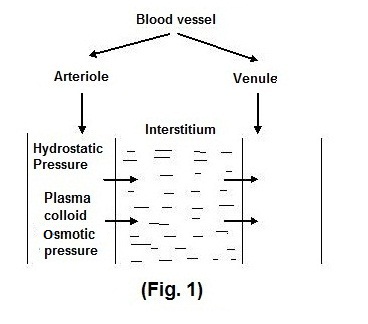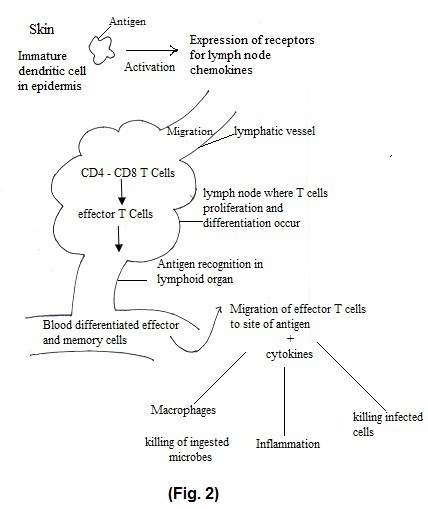Immunity
In simple terms immunity means defense mechanism of the body.
Components of the immune system –
- Skin, epithelial tissue of gastro-intestinal and respiratory tract act as primary barriers.
- Cells:
i. B Lymphocytes –
Bone marrow is the primary tissue of their origin. From it, they travel to blood, lymph nodes, spleen and mucosa associated lymphoid tissue.
In lymphoid organs they are in naive forms. Once activated by antigens (a substance which triggers antibody production), or other signals they become effecter cells. Few of them remain as memory cells, so that, repeat exposure to antigen is met readily.
ii. T Lymphocytes –
These are derived from thymus. They recognise antigens presented by dendrite cells which are present in epithelia, interstitium of all tissues. Major histocompatibility molecules (MHC) on the surface of these cells display the antigen.
iii. Macrophages –
They develop from monocytes and participate in both B and T cell mediated immune response.
iv. Natural Killer cells in the blood kill infected and tumour cells.
Other important molecules
Major histocompatibility molecules (MHC) are peptide molecules and genes encoding them are clustered on chromosome 6.
Cytokines are the messenger molecules of the immune system.
In brief, there are number of molecules participating in the process giving rise to peculiar individualistic immune response.
The events in immune response
(I) B Cell or Humoral immunity

In brief different classes of antibodies are produced depending on the triggering factors.
(II) T- Cell mediated Immunity

These simple descriptions of the process convince us the intricacies of the phenomena of Immune response. It is suggested that one can use medical dictionary to get acquainted with certain terms used in the description.
Hypersensitivity and autoimmune disorders
Previous exposure to antigens makes the individual sensitised and repeat exposure may lead to pathological reactions called hypersensitivity.
2 major classes of diseases result out of hypersensitivity.
- Allergy – Like Asthma, Urticaria etc.
- Autoimmune diseases – Here antigens present on cell surface or extra cellular matrix interacts with antibodies leading to damage to normal tissues and organs. Examples – Rheumatoid Arthritis, Myasthenia gravis, Type 1 Diabetes Mellitus etc.
Immunological response and Homoeopathic Totality
From Homoeopathic standpoint allergic responses can be put under the rubric “sensitive”. There is no appropriate rubric covering autoimmune response. However organs involved and the dominant pathological process can be looked into, to find out a group of drugs, e.g. in Rheumatoid arthritis along with joints and synovial membrane there may be skin, blood vessels involvement. The process in the beginning may be congestion or catarrh but later on may travel to bony destruction, new growth etc. Accordingly, suitable rubrics can be studied which will indicate different groups of drugs.
Genetic basis of Disease
Many human diseases have genetic basis. To what extent it causes disease depends on the type of disorder.
- Disorders with mutations in single gene – These are uncommon but represent classic genetic disorders. e.g. marfan syndrome, polycystic kidney disease.
- Chromosomal disorders – Uncommon. e.g. Down syndrome, Turner syndrome
- Complex multigenic disorders – Most common e.g. Diabetes Mellitus, Hypertension, Atherosclerosis etc.
Genetic basis of disease and Homoeopathic totality
Totality can be equated with the term diagnosis in modern medicine. Diagnosis involves location, underlying changes etc. Totality includes diagnosis in addition to other aspects of the case indicating individuality or peculiar reactive patterns of an individual. Totality indicates a drug or a group of drugs. In fact, the concept of totality emerged out of the need for individualization.
How far genetic basis of disease helps us in drug selection?
It is possible to comment on this aspect. It requires a definitive research, both at clinical and fundamental level.
